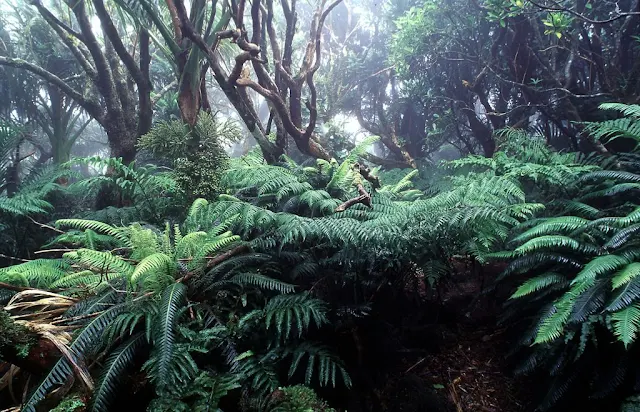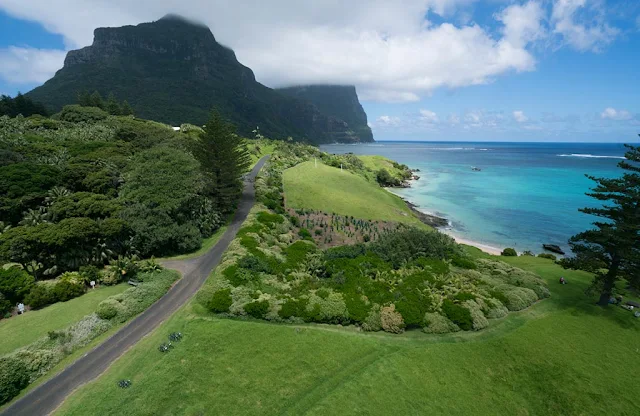Lord Howe Island is a small volcanic island in the shape of a boomerang, stretching from north to south for 10 km and having a width of about 2 km. Located in the Tasman Sea, 770 km northeast of the city of Sydney (Australia) and about 1200 km southwest of the island of New Caledonia (overseas territory of France). The area of Lord Howe Island is 14.55 km 2.
 |
| Lord Howe Island Australia |
Lord Howe Island is about 20 million years old, making it one of the oldest volcanic islands in the Pacific Ocean. The northern and southern parts of the island are of volcanic origin, while the central part is composed of coral sand. Thus, Lord Howe emerged from the merger of two volcanic islands.
 |
| Lord Howe Island Australia |
The territory corresponding to the northern of them is mainly occupied by hills and low mountains, and in the southern part of Lord Howe there are two basalt mountain ranges - Lidgbird (650 m) and Hoover (757 m). The coral bar is covered with dunes up to 45 m high. A significant part of the bay washing the island from the west is occupied by a coral reef. The coastal waters of Lord Howe are the southernmost point on Earth with colonies of coral polyps.
 |
| Lord Howe Island Australia |
At the same time, no more than 400 tourists are allowed to stay on Lord Howe, so a trip to it must be booked much in advance, given that the island is quite popular. The western coast of the island is flanked by a magnificent garland of coral reefs that form a small coastal bay of Prince William Henry.
 |
| Lord Howe Island Australia |
At the northern tip of the island lies a beautiful lagoon with several tiny islands on its water surface, a wide golden sandy beach, tall slender palms and picturesque Norfolk pine all along its coast. The island's reef is home to 460 species of tropical fish and 90 species of coral. It is considered one of the best snorkelling and scuba diving spots directly from the shore. Fantastic marine life and crystal clear waters attract scuba divers from all over the world to the island.
 |
| Lord Howe Island Australia |
Lord Howe is located on the border of tropical and subtropical climatic zones. A significant part of the island is covered with tropical forests, which are either single-storey or two-storey. Described 209 species of higher plants, of which 70 are endemic to Lord Howe. The rich unique flora and fauna of the island numbers 64 species of flowering plants and more than 130 species of birds. Only here you can see the endangered species of birds - the flightless Lordhouse Forest Shepherd. Norfolk pines grow on the lagoon coast, and lush ferns and dormice grow in the misty forest at the top of Mount Gover.
